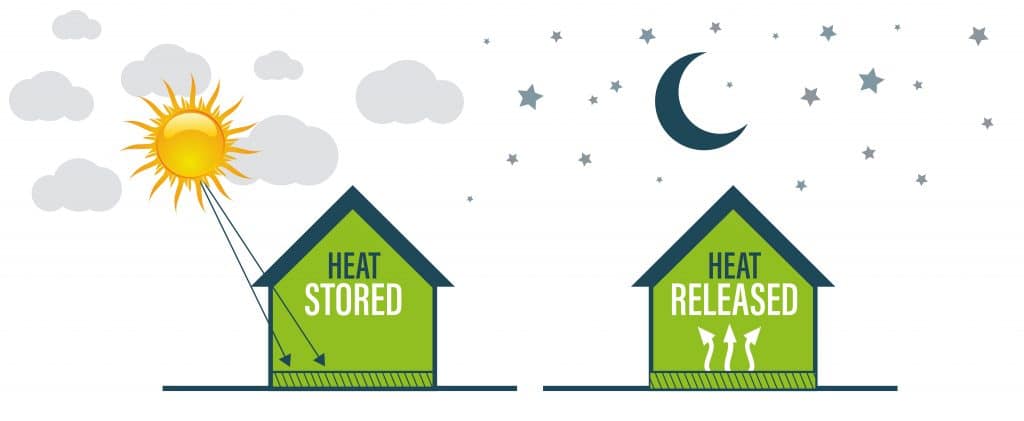
Abstract
This study explores thermal comfort in buildings, focusing on individual physiological and psychological differences and the environmental implications of energy use. It categorizes occupant behaviors into five, and factors affecting thermal comfort into structural, environmental, and human factors. The study concludes that human, structural, and environmental factors significantly impact energy consumption.
Introduction
The building and construction sectors contribute to 30-40% of global energy consumption, influenced by factors like physical characteristics, outdoor environment, services, and appliances. Occupant behavior significantly impacts building energy performance, with thermal comfort affecting indoor environmental quality. Modern comfort models help to understand these factors.
Literature Review
- Energy Consumption in Building
The building sector, accounting for 40% of global energy consumption, influences occupants’ energy performance. Sustainable buildings aim for energy efficiency and comfort, with building management systems optimizing energy consumption by controlling HVAC, lighting, and electrical equipment.
- Thermal Comfort
Thermal comfort, introduced in the late 19th century, is crucial for indoor environmental quality (IEQ) and architectural features. Traditional models like PMV and PPD have been criticized for overestimating user perception. Personal comfort models use IoT and machine learning. Globally, there’s no consensus on thermal comfort assessment, leading to different standards.
- User Behavior
Occupant behavior in buildings significantly influences efficiency, performance, and sustainability. Factors like physical, physiological, psychological, and external drivers influence comfort. Existing buildings need improvement to meet energy conservation and well-being goals.
- Nexus of Occupant Behavior, Thermal Comfort, and Energy Consumption in Buildings
Occupant behavior, thermal comfort, and energy consumption in buildings are interconnected. Occupant behavior varies across regions and climates, while thermal comfort is complex. Understanding these factors can improve energy efficiency and comfort, ensuring sustainable practices and comfortable environments.
Methodology
This study uses an interpretive philosophical methodology to analyze scientific publications on thematic areas, examining the role of the Internet of Things (IoT) in indoor environmental quality assessment and machine learning techniques in energy consumption. The approach is well-adopted in construction education studies and has been applied to occupant behavior modeling, energy consumption, and design features impact.
- Scientometric/Quantitative Analysis
Scientometric reviews analyze academic literature to track research advancements, providing insights into thematic areas and academic output. They are used to show construction-related research evolution in areas like building information modeling, robotics, sustainability, energy use, and analysis.
- Preparatory Investigation
The study’s selection of relevant articles was facilitated through a thorough investigation of key questions, search areas, subject matter, available scientific papers, and critical keywords.
- Search Strategy and Database Selection
Scopus is the most popular digital database for scientific research, with the majority of building industry publications. It offers better accuracy and consistency compared to other databases.
- Inclusion and Exclusion Criteria
This study included 120 journal articles in the built environment, no year limitation, published in English, and related keywords, excluding non-focused, non-English, or full-text articles.
- Mapping of Selected Articles
VOSviewer is a popular software for analyzing scientometric research, particularly in construction management studies. It offers flexibility to use multiple databases and visually presents large networks, making it user-friendly and popular.
Discussion
The following 4 topics were covered in the scientific mapping discussion for this study: (i) Publication Trend; (ii) Research Venues; (iii) Mapping of Nations; and (iv) Mapping Of Term Co-Occurrence.
- Annual Publication Trend:
The study reveals a growing interest in thermal comfort’s impact on energy consumption in buildings, with numerous publications published between 2015 and 2023, indicating a growing need for sustainable living.
- Journal Publication Analysis:
120 publications across 39 peer-reviewed scientific journals, with 23% in Energy and Buildings, 11% in Buildings and Environment, 7% in Energy and Sustainability, and 5% and 4% in Applied Energy and Energies, respectively.
- Mapping of Nations:
The study ranked the most productive countries in a research subject using criteria like analysis type, analysis unit, minimum papers, citations, and analysis type.
- Mapping of Term Co-Occurrence:
Keyword co-occurrence analysis identified seven clusters, including indoor environmental quality, energy savings, building performance, occupant behavior, energy consumption, energy performance gap, and thermal comfort, highlighting its importance in building energy assessment.
- Effect of Occupant Behavior on Energy Consumption for Buildings
Climate change prompts increased focus on assessing energy consumption in buildings, considering factors like occupant behavior, construction details, and HVAC system quality, thereby influencing early design decisions.
- Factors Affecting Thermal Comfort of Users and its Relation to Energy Consumption
Thermal comfort in indoor environments influences energy consumption, with factors like personal, climatic, social, economic, regulation, architecture, and interior design influencing occupant behavior. Understanding these factors can lead to solutions for improved physical and mental health and energy efficiency.
- Occupant Behavior Modeling Approaches
Occupant behavior is stochastic, requiring multiple approaches for comprehensive understanding. However, these methods face data scarcity, oversimplification, and computer power requirements.
Conclusions, Recommendations, and Future Directions
This research explores occupant behavior and thermal comfort in buildings, highlighting the importance of sustainable development and occupant modeling approaches in enhancing energy efficiency. Thermal comfort in buildings impacts resident’s health, influencing behavior like fan use and thermostat adjustments. Future research should explore building functions, structural insulation, and energy consumption comparisons.
Victor Adetunji Arowoiya1
Adetayo Olugbenga Onososen2
Robert Christian Moehler3
Yihai Fang1
1 Department of Civil Engineering, Monash University Clayton, Melbourne, VIC 3800, Australia; yihai.fang@monash.edu
2 Centre of Applied Research and Innovation in the Built Environment (CARINBE), Faculty of Engineering and the Built Environment, University of Johannesburg, Johannesburg 2028, South Africa; adetayoo@uj.ac.za
3 Department of Infrastructure Engineering, University of Melbourne, Melbourne, VIC 3010, Australia; robert.moehler@unimelb.edu.au
* Correspondence: victor.arowoiya@monash.edu

